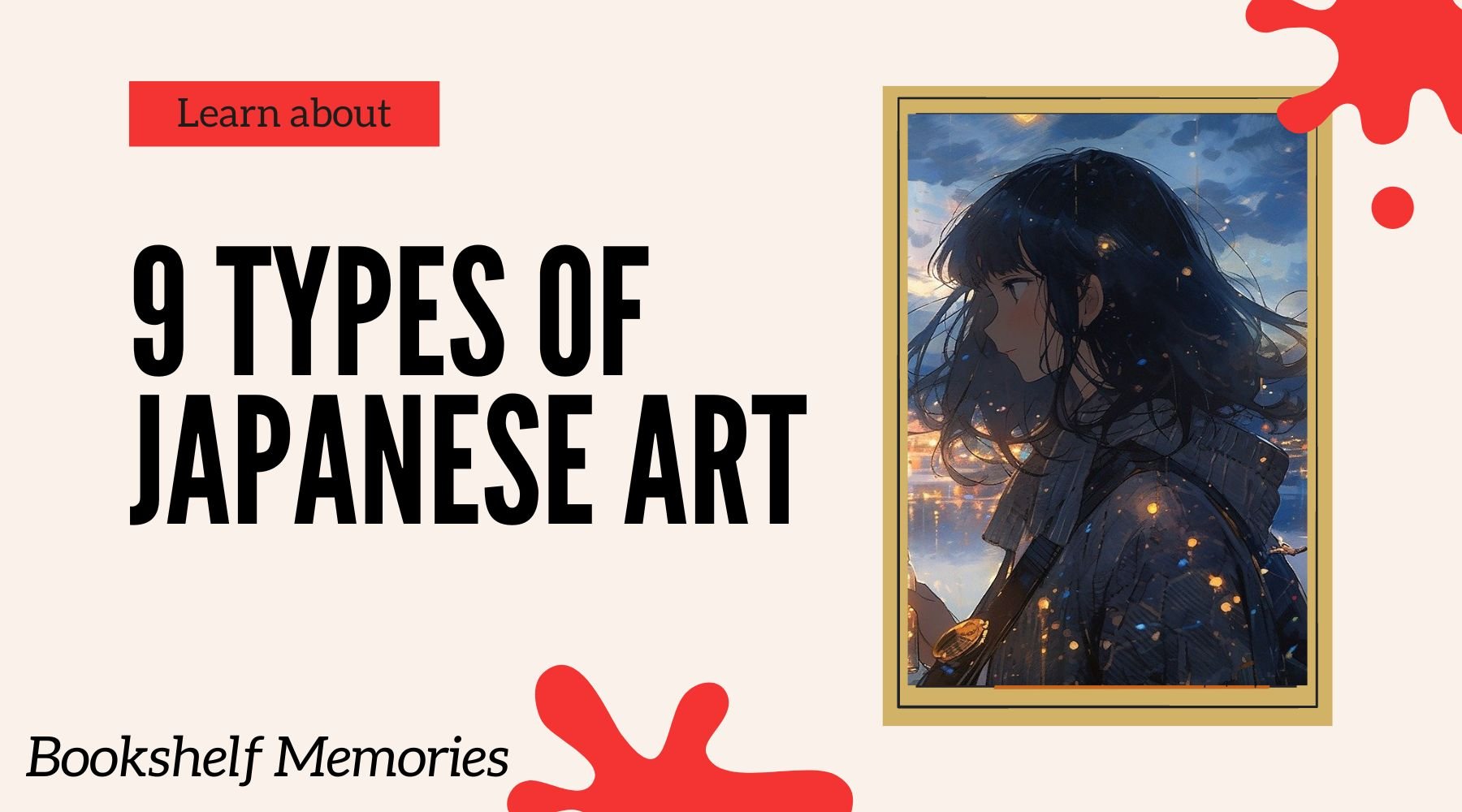Japan is known for its unique art culture. There is a fascination with the different types of Japanese Art, the forms, styles, and ultra memorable travel souvenirs with intricate designs that make it so exquisite. From paintings on scrolls to folding screens to the unmistakable Japanese folding fans… the art adorning the pieces are a spectacle to behold.
9 Types of Japanese Art Forms and Styles
1. Nihonga

Nihonga is the classical style of Japanese painting and it dates back centuries. Traditionally, the art is created using mineral pigments mixed with animal glue to stabilize them. The materials used to create pigments include the minerals obtained from corals, shells, and semi-precious stones. These are bound using hide glue, known as
nikawa. Two of the main styles of Japanese paintings are the traditional ones reserved for framed art, but the other, which is more associated with Japan is the kakejiku. It’s made by applying the pigments to silk and Washi
(Japanese paper) and creating a scroll. A hanging rod gets attached to the top of the scroll and then a cord is attached to it. For an authentic styled hanging scroll, merge Kumihimo
(a popular Japanese craft for braiding cords) with kakejiku to create something truly unique from Japan.
2. Manga

Manga in Japan refers to graphic novel art including cartoons, animations, and comic characters. In the West, manga is taken to mean Japanese comics. Authentic manga creations are done in black and white to save on print costs and time. Essentially, manga is storytelling in cartoon format. Magazines publish single chapters, then when enough are published, they are curated and released in a tankobon,
(means 'book' in Japanese). Each chapter has a narrative, but to read it you need to understand Japanese writing. The stories read from right to left, top to bottom. Manga and anime go hand in glove in Japan, but not necessarily in the U.S. because the West views anime as Japanese animation, or a “film” for a better word. In Japan, animes are sales vehicles to promote the manga series.
3. Anime

Japanese animation has a very unique visual style, usually with big eyes on the characters. They are always based on manga because the purpose is to increase manga sales in Japan, not push the films to the top of any must-watch binge series. In terms of art, like in the West, there is Japanese anime art, which would be the posters of animated motion pictures, and the 3D anime miniatures, which nearly every popular anime series has. Akihabara, Tokyo is considered the home of all things manga and anime. For those looking for complimentary designs for our
Tokyo Alley book nook kit, an anime poster would be reminiscent of the Chiyoda ward of Tokyo.
4. Ukiyo-e

Ukiyo-e is an ancient type of Japanese art traditionally done on woodblocks. The most
famous style of Ukiyo-e art EVER is Under The Great Wave of Kanagawa by Katsushika Hokusai. The painting is a depiction showing three small boats in the ocean with the great wave thundering above about to come crashing down. To the back of the painting is Mount Fuji, painted as a miniature exasperating the height of the wave in comparison.
5. Ikebana

Ikebana is a hobby for some and a profession for others. It’s the art of arranging flowers in an artistic format that makes the flora come alive. The artful arrangements conjure specific emotions. In practice, it’s a deliberate, meticulous process, involving deep reflection on the meanings of flowers, patterns of leaves, design aesthetics, and bringing a range of florals into a collection to create a harmonic display of tranquility. For anyone interested in gardening and looking for an authentic
tech-free hobby to enjoy year-round, this is like the meditative version of floral arrangements. Practitioners can spend years mastering this ancient Japanese craft.
5. Haniwa

Image credit Wiki Commons
Haniwa was an ancient relic synonymous with Japan. To this day, the Tokyo National Museum has exhibitions of these funerary masterpieces. Hand-sculpted terracotta figurines were stood on burial mounds called kofun before the 3rd century. By the 5th century, haniwa figurines were sculpted with the same clay techniques to form cylinders to make jar-like items like vases, and teapots. Haniwa classes are still taught in Japan, offering an opportunity to handcraft an authentic souvenir. When surrounded by similar cultural emblems, these can make terrific additions to shelf displays.
6. Shibayama

Image Credit: Wiki Commons
Shibayama is an art form that uses an inlay technique similar to carvings. Rather than scribing though, the base material used can be wood, ivory, or lacquer, and then using marquetry, intricate designs are applied to the base as an inlay. The materials used for the inlay can be mother-of-pearl, red coral, ivory, tortoiseshell, horn, metals, wood, and gold and silver enamels. The finished piece is a masterpiece of craftsmanship. This style dates back to the Meiji era and was a popular Japanese souvenir among Westerners after the Meiji restoration in 1868; the year when Japan began trading (after centuries) internationally. The populism gained momentum after The First Treaty of Amity and Commerce was initiated between Japan and the U.S., followed by Holland, Russia, the UK, and France.
7. Sumi-e

Unique to Japan is sumi-e, which means a black ink painting. Its closest equivalent to Western modern art is monochrome paintings, which are done using only one color. The difference with Sumi-e is that it is a painting made with black ink only and applied with a brush. Sumi-e art can comprise different things other than words, and there are various styles. For example, a haiga painting includes calligraphy, a visual piece, and a haiku poem. Using black ink with artistic brush strokes, a sumi-e haiga painting can be created.
8. Tojiki

Tojiki is the oldest tradition in the world. Not just in Japan, but it is the country’s most valued tradition. Haniwa
(mentioned above) is only one type of tojiki. Anything that’s made of clay is tojiki. That’s just the sculpting. The artwork that gets applied to the sculptures differs throughout the regions in Japan. That’s why you can find things like Kyo Ware unique to Kyoto which has a much different style to the more vibrant colors and designs on Kutani (Nine Valleys) ware that's unique to the Ishikawa prefecture.
9. Shoda

Shoda is artistic writing in Japanese with an emphasis on brush strokes. For some, it’s an authentic Japanese hobby, while for others, the calligraphy is part of a wider art form including painting poetry, and creating art out of literature. One of the simplest wall displays for tourists with photos on shelves or the wall is a framed Shoda drawing with the year painted. 2023 in Japanese would be 二千二十三.














Share:
Make a Custom Book Nook from a Kit: The Ultimate Crafty Hack
9 Great Gifts for Bookworms of All Ages